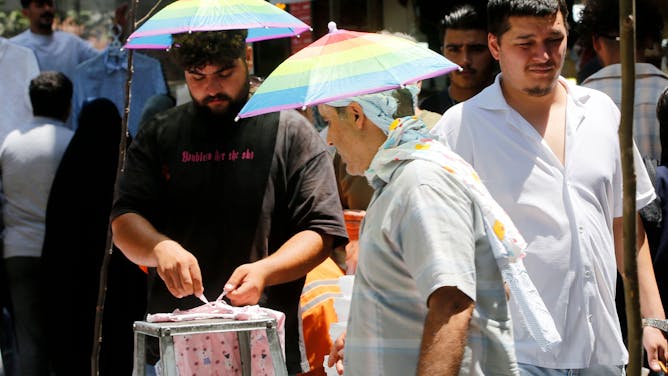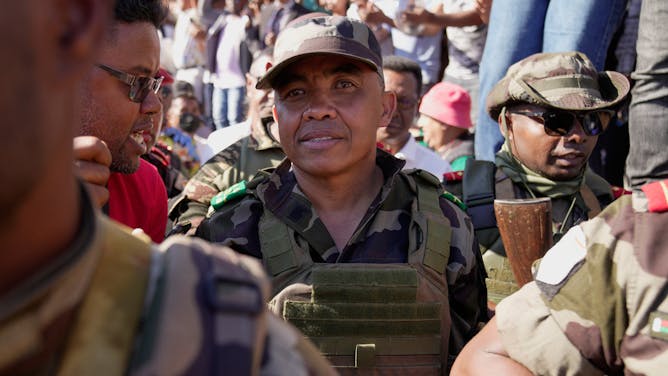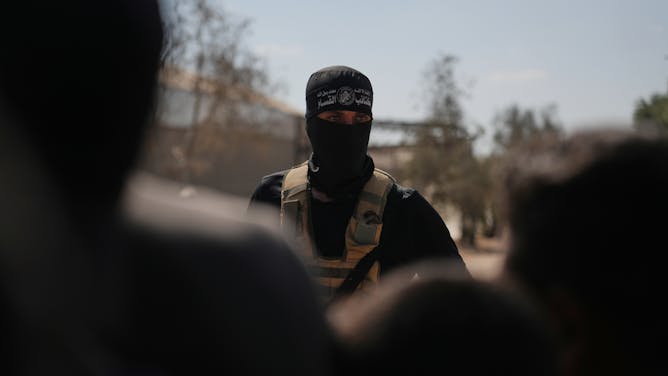|
|
|
|
Chances are, if you have read or seen any news items on Iran over the past year it concerned the conflict in the Middle East. Tehran’s short-lived war with Israel and the U.S., its waning influence on proxies across the region and speculation over the future of Supreme Leader Ayatollah Ali Khamenei have all made headlines.
What hasn’t penetrated the news cycle, however, is Iran’s ongoing environmental crisis. And it is grave.
Sanam Mahoozi, who researches media framing of environmental news in the Middle East, lays out the multiple problems that a changing climate is having on Iran: massive water shortages in Tehran with dams at their lowest levels for nearly 70 years; whole cities sinking as subsidence swallows cars and pedestrians; Iran’s iconic lakes turning into a bed of salt; provinces being blanketed by sand and dust storms, sending thousands to hospital.
And war has only added to the crisis. Israeli missile strikes on oil depots close to Tehran earlier this year, for example, reportedly released 47,000 tons of greenhouse gases into the city’s air.
Yet all this went mostly unnoticed outside Iran, Mahoozi notes, shedding much-needed light on an underreported subject.
Elsewhere this week, we have been explaining how Madagascar’s military takeover fits the trend of coups across Africa and looking at the powerful clans battling Hamas for control of parts of Gaza.
|

|
Matt Williams
Senior International Editor, New York
|
|

People in Tehran wearing sunshades over their heads in July 2025, when extremely high temperatures sparked weather alerts in several cities.
Xinhua/Alamy
Sanam Mahoozi, City St George's, University of London
Tehran is facing its worst water shortages for ten years, but there is little reporting on it outside Iran.
|

Military Col. Michael Randrianirina joins protesters as he announces that the armed forces are taking control of Madagascar on Oct. 14, 2025.
AP Photo/Brian Ingang
John Joseph Chin, Carnegie Mellon University
While illegal takeovers of state have declined globally, Africa has now seen at least 10 successful coups since 2020.
|

Masked Hamas gunmen take positions in Khan Younis, southern Gaza Strip, this week.
Abdel Kareem Hana/AP
Martin Kear, University of Sydney
Many clans and gangs are taking advantage of a security vacuum in Gaza to reassert their authority – some backed by Israel.
|

Photographer David E Scherman dressed for war in London 1942.
Lee Miller Archives
Lynn Hilditch, Liverpool Hope University
The biggest Lee Miller show since 2007, this new exhibition tells her complex story through 250 modern and vintage prints, including previously unseen images.
|
|
|
-
Gemma Ware, The Conversation
Water scientist Patrick Byrne tells The Conversation Weekly podcast what testing rivers can reveal about the biggest, often hidden, sources of PFAS pollution.
-
Stefan Wolff, University of Birmingham
A new report suggests Russia’s foreign policy strategy is to ‘stop worrying and love the disorder’.
-
John Tookey, Auckland University of Technology
In Gaza, food, medicine and bottled water are the immediate priorities for residents. But how does the city itself get rebuilt?
-
Sharon Ruston, Lancaster University
Guillermo del Toro’s retelling of the story about a scientist trying to create life is a visual treat and a rousing adaptation.
-
George Buchanan, RMIT University; Dana McKay, RMIT University
Tim Berners-Lee, the man who gave us the world wide web, dreamt the technology would unite us. But something went really wrong with the rise of social media.
-
Justin Willis, Durham University; Gabrielle Lynch, University of Warwick; Karuti Kanyinga, University of Nairobi; Nic Cheeseman, University of Birmingham
Odinga was both a remarkable figure and an embodiment of Kenya’s political contradictions.
|
|
| |
| |
| |
| |
|
|
|
|
|
|
|